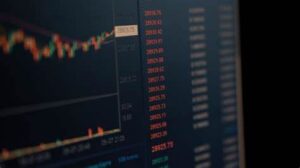Global Stock Sell-Off Signals New Phase: Volatility Ahead
Posted on — Leave a commentIn a blink of an eye, stock markets around the world began careening sharply lower on Aug. 1. Bad economic data and disappointing earnings started the crash and the stock rout accelerated as traders around the globe began unwinding leveraged stock market trades from Japan to the United States.
What Triggered the Stock Market Sell-Off?
A series of bad U.S. economic reports showing weakening employment, manufacturing and construction data pushed the stock market sharply lower on August 1.
Then, the sell-off escalated the following day with the release of a lousy July employment report. The data showed a significant cooling in the labor market, as the unemployment rate jumped to 4.3% in July. Meanwhile, employers added only 114,000 new jobs to the economy last month, well below the expected 185,000 number.
Stocks Get Battered at Home
Here in the U.S., the technology-heavy Nasdaq 100 index has now plunged 16% from its highs scored last month. U.S. small cap stocks have tumbled 13% from last month’s highs and on one day alone – the S&P 500 fell 3% on Aug. 5, marking the biggest daily loss since September 2022.
Stock Slump Quickly Spread Around the Globe
There was no place to hide as the stock losses spread from one time zone to another.
Japan’s Nikkei 225 stock index crashed 12% overnight on Aug. 5, which marks the biggest single-day drop there since the Crash of 1987. Over in Europe, stock markets there officially entered so-called correction territory, with total losses of over 10% from their recent high. Chinese stocks fell roughly 8% from their recent high. And, emerging market stocks tumbled about 7%.
What Lies Ahead?
The swift stock market collapse warns of more volatility ahead. What can you watch for?
The Fed: Quickly, the narrative on Wall Street has shifted to: Did the Federal Reserve wait too long to cut interest rates?
Many now believe the Fed should have cut rates at its July meeting amid signals of an already slowing economy. Some on Wall Street now expect the Fed may even pull the trigger on a larger than expected .50 basis point rate cut at the September meeting, versus the previously expected .25 bp rate cut. This would be a positive for gold as the precious metal historically trends significantly higher during Fed easing cycles.
Recession: Some investors are now worried the U.S. could face a recession in the months ahead as new economic data reveals a slowdown and amid the impact from the Fed’s still high interest rates. If the economy were to weaken into an official recession, this would further weigh on corporate earnings and the stock market. That in turn would increase demand for assets like gold that perform well during economic downturns and stock market declines.
Geopolitics: Beyond our shores, heightened focus is on the potential for military conflict to escalate in the Middle East, with the potential for Iran to get more directly involved in the Israel-Hamas war. A widening of the war could have broad implications for the price of oil, inflation, global equities and would likely be a catalyst for a fresh move higher in gold amid safe-haven buying.
What Does It Mean For You?
As an investor, there are steps you can take to protect your wealth and your portfolio against the uncertainty and potential for increased stock market volatility that lies ahead.
Gold and silver historically climb in value when other markets like stocks crash. Owning a percentage of your portfolio in precious metals helps offset the losses that can occur in stock, bond and even real estate markets during economic, political and military shocks and crises.
Wondering what size allocation could be right for you? New research from the well-respected CPM Group stated that over the past 50 years, the best return of a portfolio including stocks, bonds, and gold was for portfolios that had around 25% – 30% of their value in gold. Do you own enough?








